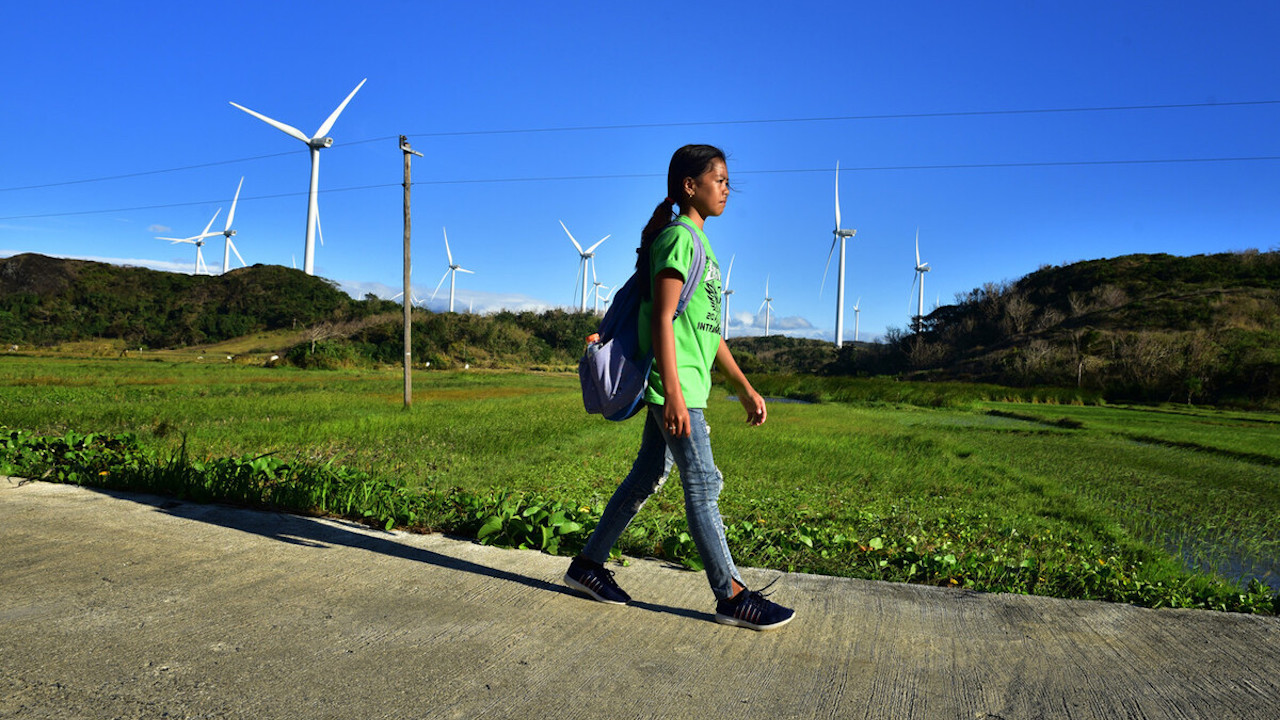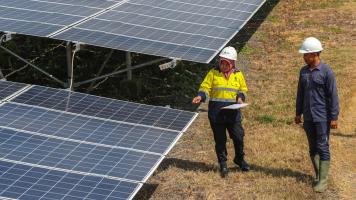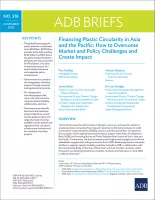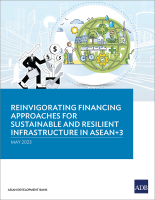
The ASEAN Taxonomy for Sustainable Finance supports a just transition to a low-carbon growth path. Photo credit: ADB.
Southeast Asia takes the next step toward Paris climate goals with the release of Version 2 of the ASEAN Taxonomy for Sustainable Finance.
Southeast Asia takes the next step toward Paris climate goals with the release of Version 2 of the ASEAN Taxonomy for Sustainable Finance on 27 March. It includes social aspects of a just transition to a green economy and criteria for coal phaseouts—a global first for a regional taxonomy.
ASEAN introduced a common language for financing sustainable economic activities (Version 1) in November 2021 in time for the COP21 climate talks in Glasgow. The taxonomy is designed to be an inclusive and science-based classification system to guide capital and funding to support member states’ shift to low-carbon and sustainable development. It is an initiative of the ASEAN Capital Markets Forum (ACMF), the ASEAN Insurance Regulators Meeting (AIRM), the ASEAN Senior Level Committee on Financial Integration (SLC), and the ASEAN Working Committee on Capital Market Development (WC-CMD).
The ASEAN Taxonomy Board, currently chaired by the Brunei Darussalam Central Bank, says Version 2 builds on the multi-tiered framework outlined in Version 1. It is multi-tiered to facilitate the transition of ASEAN member states, which have varying levels of economic, finance sector, and infrastructure development.
Essential criteria
The new version highlights the importance of social aspects of economic activities and adds this dimension as the third essential criteria. Investment projects must uphold human and labor rights and mitigate risks and adverse impact on affected people and vulnerable groups.
The other two criteria are “Do No Significant Harm,” which ensures that an activity that contributes to one environmental objective does not cause significant harm to another objective, and “Remedial Measures to Transition,” which requires that any significant harm is either removed or rendered insignificant.
The ASEAN Taxonomy has four environmental objectives: climate mitigation, climate adaptation, protection of healthy ecosystems and biodiversity, and resource resilience and the transition to a circular economy. An activity must show that it contributes to at least one of these objectives to be classified under the taxonomy.
Version 2 also expands on the “Do No Significant Harm” criteria (Annex 2).
Coal phaseout
Coal is the single largest source of energy-related carbon emissions. The ASEAN Taxonomy Board notes the efforts toward the early retirement of coal-fired power plants in Asia, including in the Southeast Asian region. It cited the following programs:
- Energy Transition Mechanism (ETM), which is a scalable initiative developed by the Asian Development Bank (ADB) in collaboration with developing member countries using a market-based approach to accelerate the clean energy transition;
- Just Energy Transition Partnership (JETP) for Indonesia, which the country launched at the G20 Leaders Summit in Bali last year with international partners, including the United States, European Union, Japan, and Canada; and
- Managed Phaseout of High-Emitting Assets program, which was developed by the Glasgow Financial Alliance for Net Zero (GFANZ), a global coalition of financial institutions.
In Version 2, the ASEAN Taxonomy Board “thoroughly considered how and where coal phaseouts (CPOs) can play a role in decarbonization to support the Paris Agreement goals.” It considered emissions intensity, absolute emissions reduction, or the reduction in period of operations (i.e., power plant age) in developing the technical screening criteria for coal phaseout (Appendix B and Annex 1). Coal phaseout may be classified as green (benchmarked to the 1.5°C Paris Agreement target) or amber (promotes inclusion).
“When approached correctly, [coal phaseout] provides a powerful tool for transition,” said the taxonomy board. It hopes that the coal phaseout criteria “encourages early action to reduce the region’s reliance on coal as a major energy source.”
Next steps
Following the release of Version 2, the ASEAN Taxonomy Board will hold consultations with key stakeholders on the assessment methodology as well as the metrics and technical screening criteria for the energy sector.
Energy is the first of six focus sectors under the Plus Standard Framework. The others five are agriculture, forestry and fishing; manufacturing; transportation and storage; water supply, sewerage and waste management; and construction and real estate. The target is to develop the technical screening criteria in phases and finalize them by 2025.
The Plus Standard Framework (sector-specific technical screening criteria) is one of two assessment approaches that the ASEAN Taxonomy offers. The other approach is the Foundation Framework, a principles-based assessment using qualitative, sector-agnostic screening criteria. Version 2 provides the complete Foundation Framework with detailed methodologies for assessing economic activities and provides guide questions, decision trees, and use cases.
This article was first published by BIMP-EAGA on 3 April 2023.

BIMP-EAGA
The Brunei Darussalam–Indonesia–Malaysia–Philippines East ASEAN Growth Area, or BIMP-EAGA, is a cooperation initiative established in 1994 to spur development in remote and less developed areas in the four participating Southeast Asian countries.


